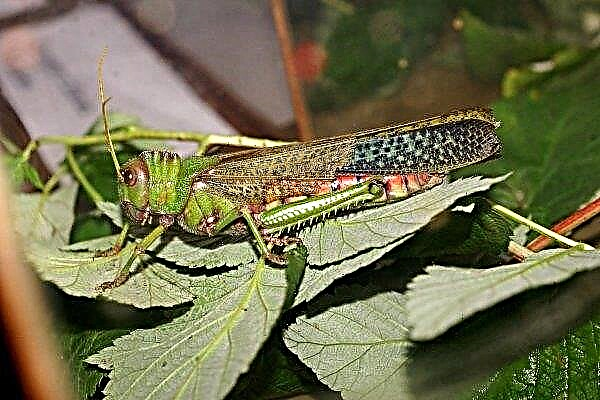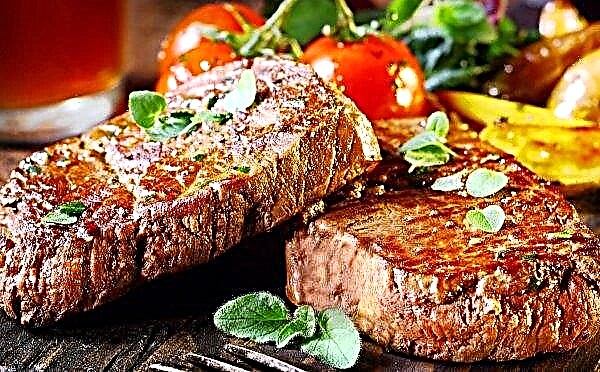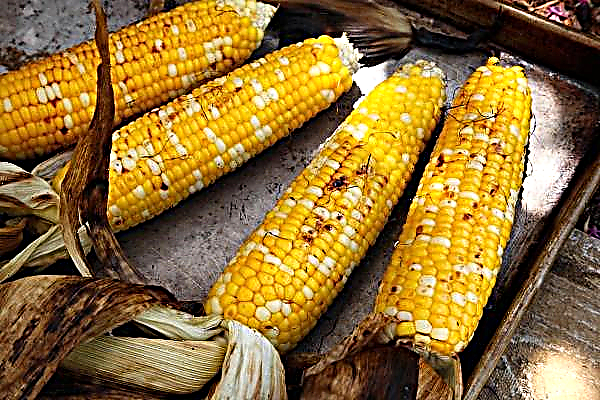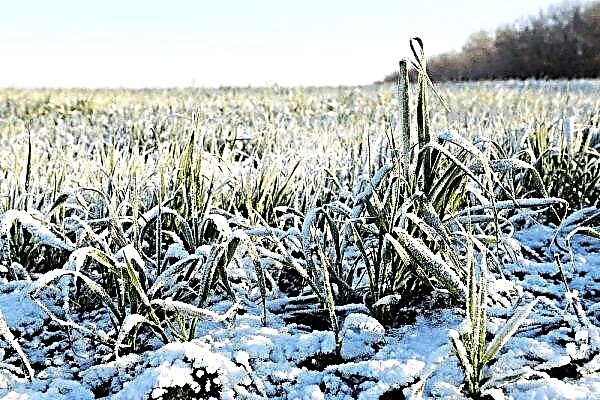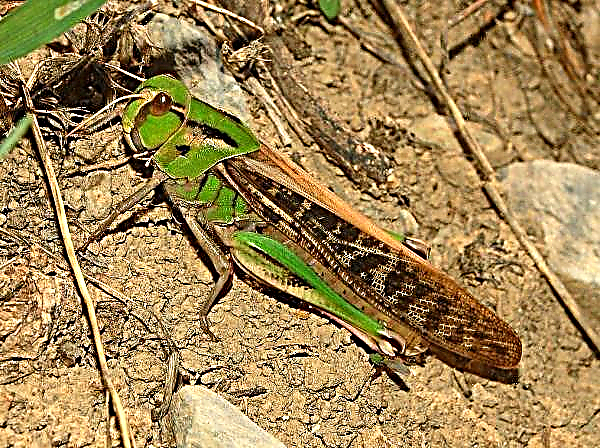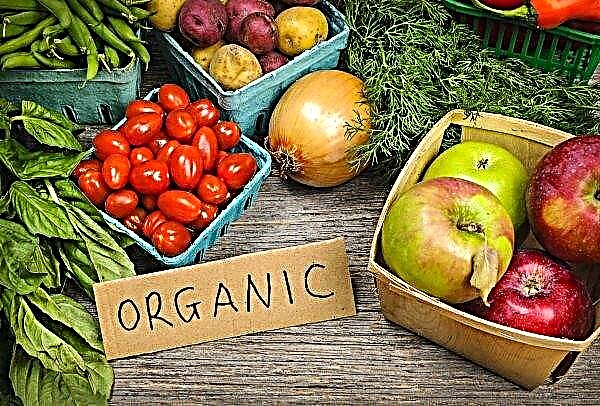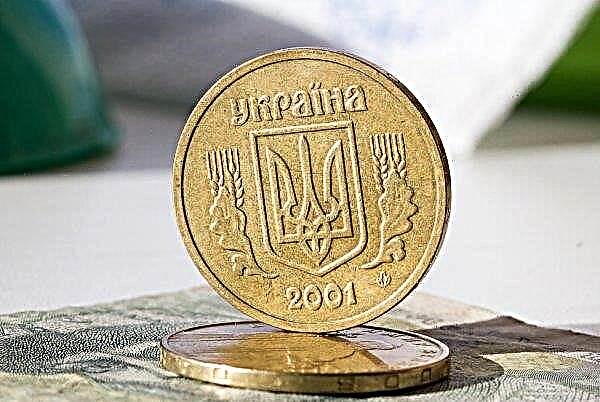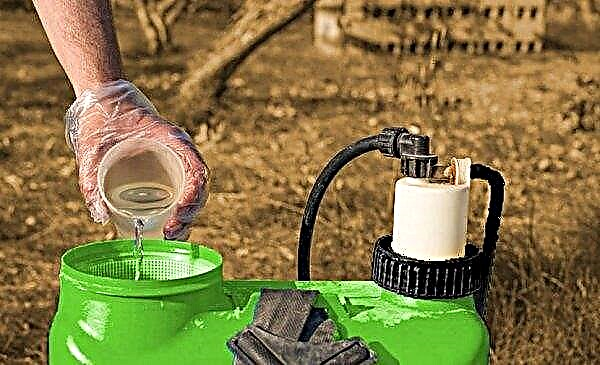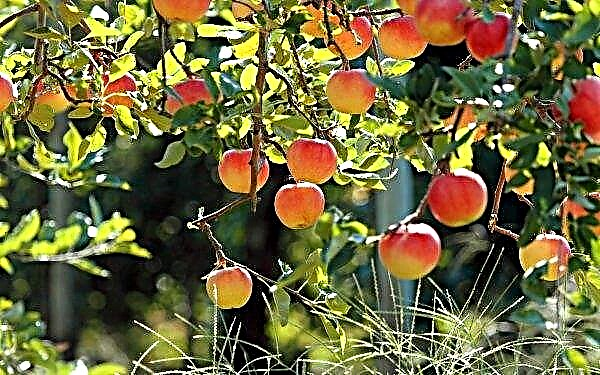Plant growers know many varieties of cucumber. Today they differ in both exotic coloring and shape, and in special taste. Hummingbird F1 is considered one of the most striking among hybrid varieties, which is characterized by excellent taste, unpretentiousness and increased precocity. This article details the main features of the plant and the rules for its successful cultivation.
Grade characteristics
Hummingbird cucumbers got their qualities thanks to their hybrid origin. As a result of painstaking work, a universal fruit plant was obtained, capable of producing high yields in almost any agricultural technique.
Bush description
Hummingbird variety is a highly productive parthenocapical plant. The root system of the cross-sectional hybrid is strongly branched; numerous lateral branches develop on the large main root. The stalk is branched, up to 30 cm high, creeping and curly. The bush is characterized by beam weaving, and the plant also releases a lot of antennae, thanks to which it can independently attach to the support.

The growth of green mass occurs quite quickly, the lateral sinuses are small. The leaves on the stem are bright green, heart-shaped, divided into 5 lobes. The bush blooms together, the hybrid does not require a pollinator. In each leafy ovary, 2–8 fruits are formed.
Fruit Description
The hybrid produces multi-seeded fruits of the gherkin type with juicy and crisp flesh, rich green in color, with a pimpled peel. Also on the surface of the cucumbers, one can observe characteristic light streaks. Bitterness is not inherent in fruits. The shape of the cucumber is cylindrical, elongated. The average fruit length is 5–8 cm, and the diameter does not exceed 3.5 cm. Cucumbers are not prone to overgrowing.
Did you know? For the first time in culture, a cucumber appeared about 6 thousand years ago. The plant began to grow in the territory of modern India and the Himalayas, where it is found in the wild today.
Fruitfulness
The variety is characterized by high productivity, the average fruit mass is 60–80 g. At the same time, about 1 kg of cucumbers can be harvested from 1 m² of plantings. The maximum biological yield does not exceed 13 kg / m², however, for this, the plant must be grown under conditions close to optimal.
Ripening time
Hummingbird F1 refers to precocious fruit hybrids. The first crop can be harvested already 35 days after sowing, and full fruiting occurs approximately on the 40th day after sowing seeds.

Advantages and disadvantages of Hummingbird cucumbers
- The main advantages of the variety:
- excellent yield;
- unpretentiousness;
- tolerates adverse conditions;
- the plant can be cultivated in open soil, and even on the windowsill;
- overgrowth is not peculiar to fruits;
- has high resistance to cucumber mosaic and powdery mildew, as well as medium resistance to downy mildew;
- the crop is suitable for fresh consumption, as well as for conservation;
- cucumbers are distinguished by high keeping quality and transportability.
- The main disadvantages of hummingbirds cucumbers:
- the plant cannot be grown from the seeds of a selected crop;
- fairly small fruits;
- during canning, cucumbers become soft;
- low germination of seed.
Landing Features
This variety grows and develops well in both open and closed soil, including garden pots. That is why the hybrid is one of the most unpretentious representatives of the genus. However, in order to obtain healthy high-yielding plants, one should not only create the required microclimate for them, but also provide the seeds with the necessary preparation.
Did you know? Cucumbers gained particular popularity in antiquity. This fruit is even mentioned in ancient biblical writings as one of the main vegetables of the Egyptian state.
Optimum seeding time
The optimal period for sowing seeds of this variety is considered the second half of spring. The most suitable time lasts from late April to the second half of May. In earlier times, young shoots will not be able to get the necessary lighting, which in the future will lead to stretching of the bushes and fragility of the stems.

Sowing in the first half of summer will lead to a reduction in the growing season, which will reduce the yield of bushes at times. When growing on the windowsill, the timing of sowing can be neglected, however, for this, cucumbers must be additionally illuminated and regularly fed.
Soil selection and preparation
Cucumbers are cultivated on loose and nutritious soil, which is mixed from purchased soil for flowering plants, compost or humus and perlite (4: 1: 1). As an alternative, any lightweight soil for seedlings with a neutral pH value (6–7) can be used. Moreover, such a substrate must necessarily be based on peat or humus.
Before sowing, the soil must be sterilized - this makes it possible to avoid the defeat of cucumbers by infections and pests.
Sterilization is carried out in any of various ways, but the following methods are most often used:
- pouring boiling water;
- roasting in the oven (+120 ... + 130 ° С, about 20 minutes);
- keeping in cold (–20 ...– 25 ° С, for 3 days);
- bactericidal treatment (2% solution of potassium permanganate, vitriol or formalin).
Also parthenocarpic varieties of cucumbers include:
Seed treatment
Before sowing, the seeds must also be sterilized - this best helps to protect young plants from infection.
For this, different methods are also used. Most often, seed is kept in such means:
- 2% potassium permanganate solution (20-30 minutes);
- 70% alcohol solution (5-10 minutes);
- fungicide "Fitosporin" or "Baxis" (1-2 hours).

In the presence of large-scale crops, soaking in sterilizing solutions is irrational, therefore, it is replaced by heating. To do this, the seeds are kept in the oven or in a special drying cabinet at a temperature of + 40 ° C for 3 days. To speed up the procedure, the temperature can be increased to + 80 ° C, while the heat treatment is carried out for about 24 hours. Immediately before planting, seed is treated with growth stimulants. Due to this, not only their germination capacity, but the activity of rooting increases.
Perform this procedure for 6-8 hours, using the following drugs:
- “Agate” (4–7 g / l);
- Baikal (1: 1000);
- "Sodium humate" (0.3 g / l).
Important! Before processing the seeds must be sorted out. Seeds with an uncharacteristic color and shape, with all sorts of traces of spots and other lesions are subject to rejection.
Landing
The planting of cucumbers in open soil begins only after the onset of a full spring thaw. These are heat-loving plants, so the air temperature should rise to at least + 15 ° C. In a temperate climate, this period usually begins in early May.
In colder climates, the best time to land is from late May to the first half of June. At this point, the seeds must be germinated, and at young seedlings - at least 2-3 full leaves must be formed.

Variety Care Features
Like any fruit plant, the Hummingbird variety requires proper care. This hybrid requires not only watering, fertilizer and soil care, but also timely formation. Without this, a crop can turn into a low-yielding bush.
Watering and fertilizing
Cucumbers are considered one of the most hygrophilous plants, so you need to water them regularly. However, it is not worth over-moistening the cucumber plantations - this creates favorable conditions in the soil for the development of a variety of fungal infections.
Watering is carried out in 2-3 days, for each 1 m² of plantings no more than 5 liters of water are used, and during rains the amount of moisture is reduced to 2 l / m². For irrigation use only clean and settled water. It must be warmed up to ambient temperature, otherwise watering will cause the roots to become cold.
For top dressing, neutral or slightly alkaline fertilizers are most often used. This can be all kinds of organic fertilizers, the most popular of which is a solution of cow manure (1:10) or bird droppings (1:15). Make a mixture by watering at the root, at the rate of 1.5 l / m² of beds. Feeding should be done regularly: first, do it 2 weeks after planting, and then every 15–20 days.

Alternating organic mixtures with infusion of wood ash (200-300 g / l) will help increase the effectiveness of top dressing. This makes it possible to saturate the soil with potassium, which is especially important for the growth and productivity of cucumbers. About 500 ml of working solution should be used for each plant.
An alternative to organic top dressing can be highly nutritious mineral mixtures. For this, 15 g of ammonium nitrate, 25 g of superphosphate, 20 g of potassium chloride are dissolved in 10 l of water. Cucumbers are fertilized with such a mineral solution every 2-3 weeks throughout the entire vegetative period.
Did you know? The largest cucumber in history was grown in 2008. Farmer Alf Cobb from the UK received a 91.7 cm long vegetable in his garden.
Garter and bush formation
The traditional agricultural technique of growing cucumbers involves mandatory garter. The most effective way to fix the bushes is considered to be a garter to the trellis. To do this, a horizontal bar with vertical supports is fixed above each bed. Since the height of each bush does not exceed 30 cm, the overall structure should not be higher than 50 cm.

Durable twine is lowered from the rod to each plant, which is attached to the peg at the base of the plant. Throughout its development, the plant is woven into twine, which becomes the main support for the cucumber. You can replace the trellis with individual wooden or metal pegs.
You can begin to form a bush within 2-3 weeks after planting. Plants with 1 powerful stem and several lateral branches have the highest productivity. Therefore, as the bush grows, all lower stepsons must be cut off up to the 3rd pair of leaves. After this, half of all processes are removed, while the apex is left untouched.
If necessary, thinning on the bushes and foliage. This helps to accelerate the growth of fruits, as well as increase the number of crops. Removal is carried out as the cucumbers grow - all the leaves that shade the fruit are pruned. It should be remembered that in this way no more than 30% of the foliage can be removed, otherwise the bushes will die.
Soil care
Also, special care during the cultivation of cucumbers requires soil. The beds need regular weed removal, cultivation and mulching. Weeding and cultivation are often combined - this makes it possible to simultaneously harvest weeds and saturate the soil with oxygen, which ultimately reduces the negative impact of the environment on the bushes and increases fruitfulness. Weeding and loosening cucumber beds need 1 time per week, the day after watering.

Mulching allows you to create a favorable soil microclimate for plants, as well as reduce labor costs for irrigation and weeding. They begin to mulch within 2-3 weeks after planting, and in the future they add mulch as necessary. As a protective layer, wood sawdust, crushed bark, spruce needles and other natural materials are used.
Important! The root system of cucumbers is located in the upper layers of the soil, so you need to loosen the planting to a depth of no more than 5-7 cm.
Possible diseases and pests
Difficulties with the cultivation of hummingbird cucumbers are rare. Usually, the cause of problems is non-compliance with agricultural technology and general rules for growing crops. In this case, both dangerous fungi and all kinds of pests can appear on the beds.
The most common infectious diseases of the Hummingbird variety:
| Title | Methods of struggle |
| Anthracnose | Patient bushes are sprayed with solutions of copper chloroxide (4 g / 1 l of water), they are treated every 10-12 days, until the infection is completely eliminated. |
| Bacteriosis | You can overcome the pathology by spraying with copper chloroxide (4 g / l of water), with an interval of 10 days, until complete recovery. |
| Peronosporosis | Plants are twice treated with highly active fungicidal preparations (Acrobat MC, Ridomil MC, Kurzat R) with an interval of 14 days. |
| Sulfur and White Rot | The plantings are sprayed with a urea solution (1 g / 1 L). On the beds it is applied 1 time per week until the manifestations of rot are completely eliminated. |
Characteristic crop pests:
| Parasite name | Remedies |
| Thrips | Plantings are treated with drugs "Actellic", "Confidor", "Karate" |
| Ticks | Fighting a pest by spraying with Actellik or Talstar |
| Aphid | Treating plants with a solution of Confidor or Karate will help eliminate the pest. |
| Bed bugs | Affected plantations are treated with the insecticide "Karate" or "Confidor" |
Features of harvesting and storage of crops
The first fruits ripen about 6 weeks after emergence. At this time, the first harvest is carried out, after which the selection of fruits is performed every 2 days. At this point, cucumbers should be extended to 5–8 cm. It is best to pick crops in the morning or evening, on a dry and sunny day.

Separate the ripe fruit from the peduncle with a sharp kitchen or garden knife. Then the collected cucumbers need to be placed in baskets or deep containers for vegetables - they serve as temporary containers, from which later the fruits arrive at a permanent storage location. Manipulations with the fruits are carried out carefully, during the selection they should not be damaged, as this greatly reduces their presentation and keeping quality.
The selected fruits are stored in a dry and cool place at a temperature of about + 5 ° C for 1 month after selection. Without observing special conditions, the shelf life of Hummingbird cucumbers is no more than 14 days, and at the same time, the taste and aromatic properties of the crop are gradually reduced. To preserve the crop of cucumbers for the whole winter, it is better to pickle them.
Hummingbird F1 cucumbers is a productive fruit hybrid, unpretentious and high-yielding. This variety can be successfully grown both in open soil or greenhouses, and on the windowsill. And if you must take into account all the features of growing this crop, you can regularly get an excellent harvest of fresh cucumbers.


